We use cookies to improve the services we offer you. By continuing to browse this site, you consent to keep them in accordance with our Privacy Policy.
×We use cookies to improve the services we offer you. By continuing to browse this site, you consent to keep them in accordance with our Privacy Policy.
× 2,093
2,093
 8 min
8 min
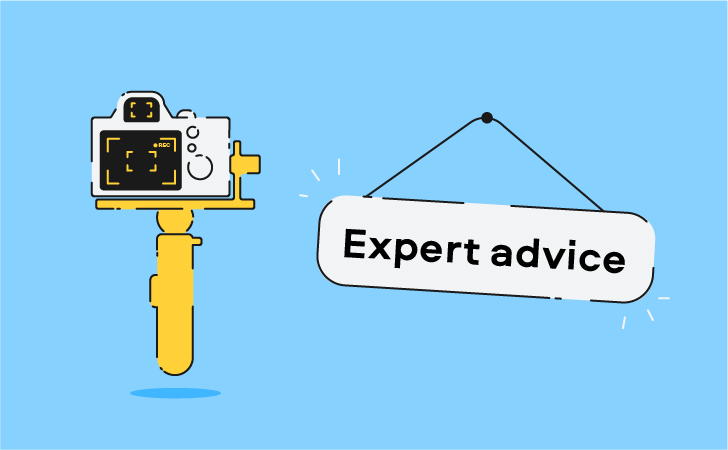
Meet Anthony Wood – a professional videographer from the UK, our expert on shooting like a pro. As a director and a cameraman, Anthony has taken part in various projects ranging from music promos to BBC series and drama docs. He’s worked at several Olympics, shot news features for the London Bureau of CBS news, had a chance to meet celebrities and members of the Royal family – you name it!
We’ve asked Anthony to share some tricks and techniques for everyone interested in videography. This time we’ve decided to concentrate on filming aspects, as it’s understanding both shooting and editing that really takes your videomaking to the next level.

Start thinking creatively about what to shoot well ahead of time. It’s also worth getting some ideas for shots written down. You may not be able to get everything you think of due to circumstances, but it’s good to use your imagination. What shots are you planning? What equipment’s needed? Do you have enough time? Where will the sun be at that location at that time of day? This type of preparation always pays off. Making notes and checking them on the shoot day is important. It’s easy to forget things in the midst of a hectic schedule. And in most cases, it’s difficult (if not impossible!) to go back.
Case Hardin” Cheap Streaks from a Bottle” from Nettle Media on Vimeo.
That might seem like a contradiction, but what I mean by fast is the smooth and fluid use of your kit that comes with practice. Changing lenses, setting up the tripod, getting down on the ground for a low shot can all be done efficiently with a few mindful training sessions.
By slow I mean putting more time and energy into shots. You might run up the stairs of a tower to get a top shot. Or you might run back to your car for the wide-angle lens or tripod to get a small improvement on a particular frame. These things take time even when you’re working fast. That’s what I mean by slow – taking the extra time to make small improvements.
A sequence is a series of shots that forms a segment of a film. If it’s a cooking film, you might have a chopping sequence. As well as getting some great shots of chopping. you might want to think about an opening and closing shot for this sequence. When it comes to the edit, these shots can really help to create the right rhythm and pace. Each sequence can have a beginning, middle and end.
For a smooth edit, it also helps to have a variety of shots sizes – wide shots, super-wide shots, mid shots, close-ups, extreme close-ups and so on – all taken from different angles. Get used to thinking in sequences and looking for a variety of shots. If you put all your effort into one great shot, it might not look so well if you don’t have other shots to cut with it.
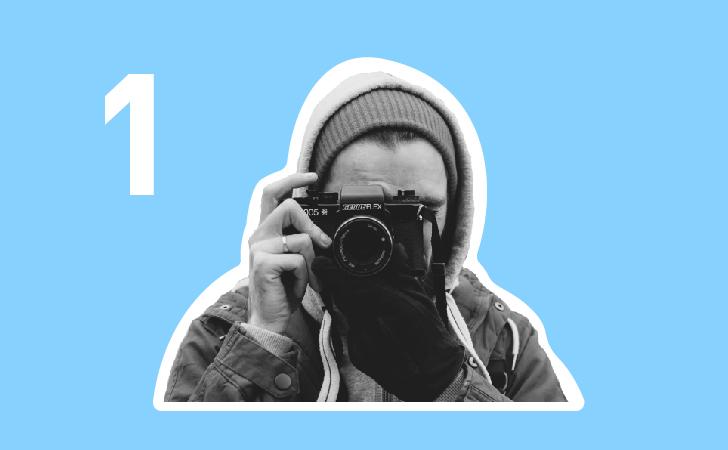
Find a shot, hold it and count to ten – slowly. One thousand and one, one thousand and two, one thousand and three… That’s how I count up to ten before I move the camera or cut. That is to make sure I have enough. Although it’s not relevant to all shooting situations or styles, it’s a good discipline to practice. You can’t always get to ten seconds. but if all your shots are only two or three seconds long – then they could be tough to edit. If you ask an editor, they’ll usually agree this is a common and very aggravating problem… Even with professional shooters.
This is one of those ideas like counting to ten – it’s not always possible to do that, but it’s still a good practice and a useful discipline to learn. When shooting someone walking, try to let them clear frame. After they have left the frame, count another second or two before you move the camera or cut. When someone leaves the room, wait until they’re fully out of the room before you move or cut. Maybe wait for the door to close, too. If it’s a car passing the camera, see if you can start with an empty frame and have the car enter. Leave the frame all in one shot, then wait a few more seconds before you cut. Not only will you have the sound of the engine to lay over the next shot for a smooth edit, but the decision of where to cut will be made at the time of editing.
The idea of shooting more at the beginning and the end of each shot is – like the idea of holding a shot for a count of ten – another useful discipline that should make editing a pleasure. All of these require ideal circumstances of course, so there are many times when it’s not possible or even desirable to follow these guidelines.
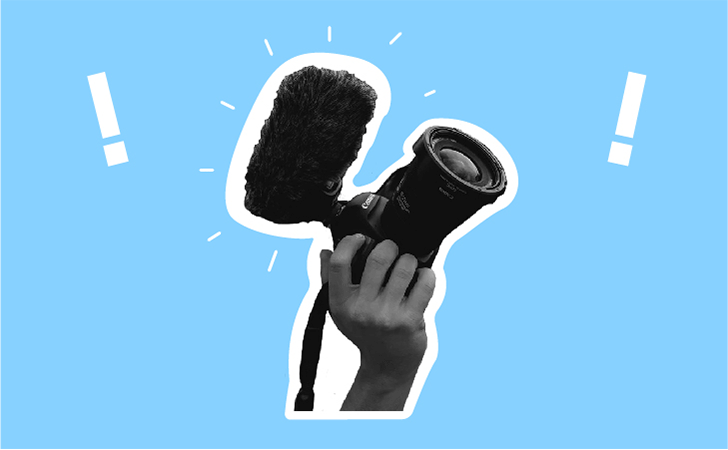
Having the option to use the natural sound recorded at the time of shooting is another good practice. Even if it’s just a hint of ambient sound in the final mix, it brings a shot to life. If you’re in a controlled scenario, you might work to eliminate distracting background sounds, turn off radios and extractor fans, maybe close windows. Always shoot as if the sound is important. You won’t complain in the edit if you have decent sound, but it could be very disappointing if you don’t.
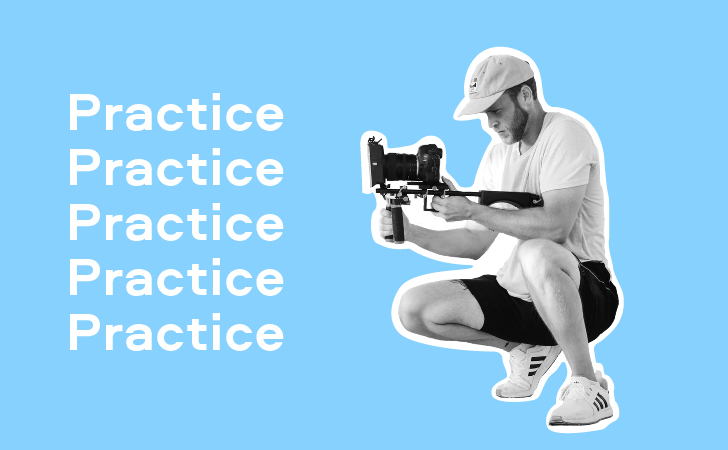
While we learn a lot from being on a shoot, it’s also good to be away from the pressures of getting everything done and just do some training. You could set up a couple of bottles on a table and practice moving focus from one to the other. You could set the camera on a tripod and practice gentle moves from the door handle to the picture frame (or whatever’s around). Do the same with hand-held moves. Plan a moving shot with a beginning, middle and end, and train it over and over until you get it smooth and steady. Do this, and you’ll find that next time you go on a shoot these specific skills will have improved.
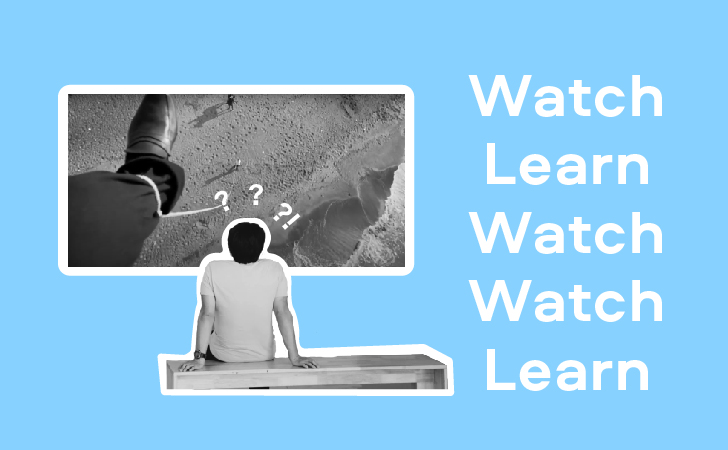
Take a film you like that’s shot in a style you’d like to use. Watch it through. Then go back and watch it again, but this time note how the sequences work and what type of shots are used. Also note how long the shots last in seconds, and all the details. Go through it several times and really break it down. Pay special attention to how the shots work with the script and the story. It’s not always fancy camerawork. Good storytelling can be simple shots used well.
This is my final tip and an important one. Learn to edit. That doesn’t mean learning how to use all the editing transitions and effects. Just basic video cuts together with audio, J-cuts and L-Cuts. A J-cut is where we hear the audio before the video, and an L-cut is where the audio remains after the picture has changed. There is no better way of learning how to shoot a sequence than having some footage and experimenting with editing.
Ready to follow Anthony’s advice? Start with downloading our Movavi Video Suite – a simple and user-friendly program for beginners and amateur videographers.